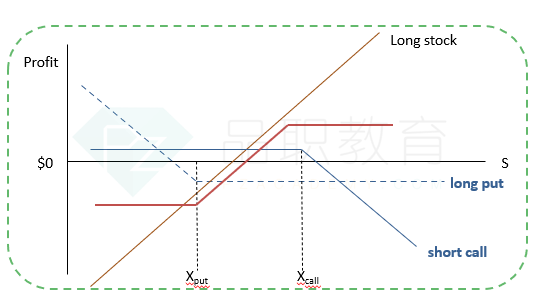NO.PZ2017121101000019
问题如下:
Aline Nuñes, a junior analyst, works in the derivatives research division of an international securities firm. Nuñes’s supervisor, Cátia Pereira, asks her to conduct an analysis of various option trading strategies relating to shares of three companies: IZD, QWY, and XDF. On 1 February, Nuñes gathers selected option premium data on the companies, presented in Exhibit 1.

Nuñes reviews the following option strategies relating to QWY:
Strategy 4: Implementing a protective put position in QWY using the April €25.00 strike option
Strategy 5: Buying 100 shares of QWY, buying the April €24.00 strike put option, and writing the April €31.00 strike call option
Strategy 6: Implementing a bear spread in QWY using the April €25.00 and April €31.00 strike options
Based on Exhibit 1, Strategy 5 offers:
选项:
A. unlimited upside.
B. a maximum profit of €2.48 per share.
C. protection against losses if QWY’s share price falls below €28.14.
解释:
B is correct.
Strategy 5 describes a collar, which is a combination of a long position in shares, a long put option, and a short call option. Strategy 5 would require Nuñes to buy 100 QWY shares at the current market price of €28.49 per share. In addition, she would purchase a QWY April €24.00 strike put option contract for €0.35 per share and collect €0.32 per share from writing a QWY April €31.00 strike call option. The collar offers protection against losses on the shares below the put strike price of €24.00 per share, but it also limits upside to the call strike price of €31.00 per share. Thus, the maximum gain on the trade, which occurs at prices of €31.00 per share or higher, is calculated as (X2 – S0) – p0 + c0, or (€31.00 – €28.49) – €0.35 + €0.32 = €2.48 per share.
请问老师,C 是股价跌到24,put 才开始保护对吗?



